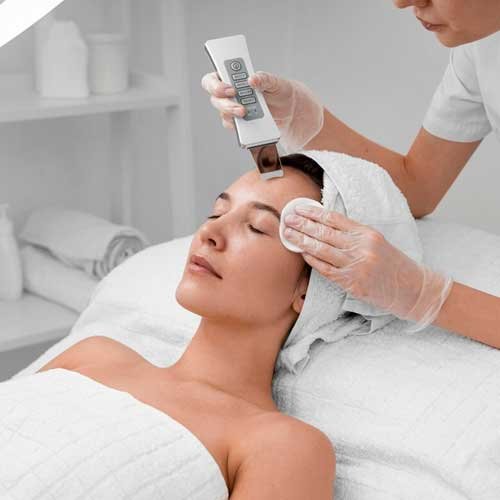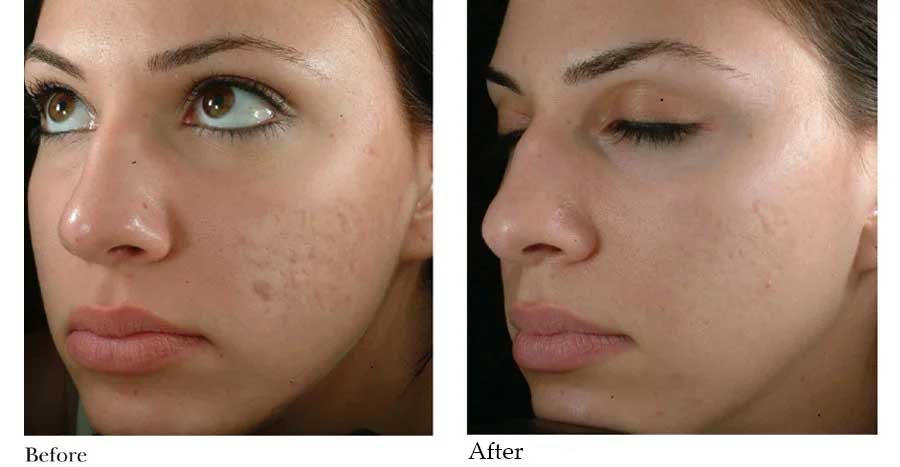Dermabrasion
Dermabrasion

What is Dermabrasion?
Dermabrasion is a powerful exfoliating treatment designed to rejuvenate the skin by removing its outer layers. Using a specialized rotating instrument, this technique effectively buffs away the surface layer of the skin, revealing a smoother, more radiant complexion beneath. Dermabrasion is most commonly performed on the face, where it addresses a variety of skin concerns.
Importance of Dermabrasion
Dermabrasion is highly valued for its ability to dramatically improve skin texture and appearance. By removing the damaged outer layers, this treatment stimulates the body’s natural healing process, promoting the growth of new, healthy skin. It is a trusted method for those seeking a more youthful and refreshed appearance without invasive surgery.


Why Do People Need Dermabrasion?
Improve Skin Texture: Over time, factors like aging, sun exposure, and acne can lead to uneven skin texture. Dermabrasion helps in smoothing out the skin, making it feel softer and look more even.
Reduce Fine Lines and Wrinkles: The exfoliating action of dermabrasion effectively diminishes fine lines and wrinkles, offering a more youthful appearance.
Minimize Acne Scars: For those struggling with acne scars, dermabrasion provides a solution to reduce their visibility, leading to clearer skin.
Combat Sun Damage: Sun exposure can cause significant damage to the skin, resulting in dark spots, rough patches, and pigmentation issues. Dermabrasion helps in removing these damaged layers, revealing a healthier complexion.
- Treat Hyperpigmentation: Uneven skin tone and dark spots can be visibly reduced through dermabrasion, leading to a more balanced and uniform complexion.
Why Consider Dermabrasion?
Non-Surgical Rejuvenation: Dermabrasion offers significant improvements in skin appearance without the need for surgical procedures.
Boost Confidence: By addressing various skin concerns, dermabrasion can enhance self-esteem, allowing individuals to feel more confident in their skin.
Customizable Treatment: The procedure can be tailored to each individual’s skin type and concerns, ensuring personalized results.
Quick Results: The effects of dermabrasion are visible soon after treatment, making it an excellent option for those seeking rapid skin improvement.



When to Consider Dermabrasion?
If you’re dealing with persistent skin issues such as acne scars, sun damage, or fine lines, or if you simply want to refresh and revitalize your skin, dermabrasion could be the ideal solution. Consulting with a skincare specialist can help determine the best approach for your unique needs.
Experience the transformative effects of dermabrasion and renew your skin’s natural radiance today.
Your Questions Answered
What is dermabrasion?
Dermabrasion is a cosmetic procedure that involves the mechanical exfoliation of the outer layers of the skin. This is typically done using a rotating brush or diamond wheel to remove damaged skin cells and promote the growth of new, smoother skin. It is commonly used to improve skin texture, reduce the appearance of scars, and address other skin imperfections.
What are the benefits of dermabrasion?
Dermabrasion offers several benefits, including:
- Smoother skin texture: Helps reduce the appearance of rough skin and uneven texture.
- Scar reduction: Effective for minimizing acne scars, surgical scars, and other types of scarring.
- Reduced fine lines and wrinkles: Can improve the appearance of fine lines and wrinkles.
- Improved skin tone: Helps even out skin pigmentation and reduce age spots or sun damage.
How is dermabrasion performed?
During a dermabrasion procedure:
- Preparation: The skin is cleansed, and a numbing cream or local anesthesia is applied to minimize discomfort.
- Exfoliation: A specialized device with a rotating brush or diamond wheel is used to gently remove the outer layers of the skin.
- Post-treatment: After the procedure, the skin is treated with soothing ointments, and patients receive aftercare instructions to promote healing and reduce the risk of complications.
What can I expect during recovery from dermabrasion?
Recovery from dermabrasion can involve:
- Redness and swelling: The treated area may be red and swollen for a few days.
- Healing process: Skin may crust or flake as it heals, which typically takes about 7 to 14 days.
- Sun protection: It’s crucial to protect the skin from sun exposure during the healing period to prevent pigmentation changes.
- Moisturization: Keeping the skin moisturized helps promote healing and reduce discomfort.
Are there any risks or side effects associated with dermabrasion?
Potential risks and side effects include:
- Infection: Though rare, there is a risk of infection if proper aftercare is not followed.
- Hyperpigmentation or hypopigmentation: Changes in skin color can occur, especially in those with darker skin tones.
- Scarring: Improper technique or healing issues can lead to scarring.
- Sensitivity: The skin may be sensitive or irritated temporarily.
How long do the results of dermabrasion last?
The results of dermabrasion can be long-lasting, with improvements visible for several months to years. However, the longevity of results depends on factors such as skin type, the extent of treatment, and the maintenance of a good skincare routine. Some individuals may require additional treatments to maintain optimal results.
Who is a good candidate for dermabrasion?
Good candidates for dermabrasion are typically individuals who:
- Have skin imperfections: Such as acne scars, uneven skin texture, or fine lines.
- Are in good health: And have no contraindications such as active skin infections or certain skin conditions.
- Have realistic expectations: And understand the potential benefits and risks of the procedure.
- Follow proper aftercare: To ensure effective healing and minimize complications.

